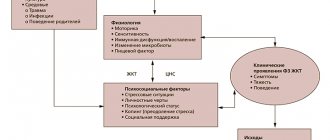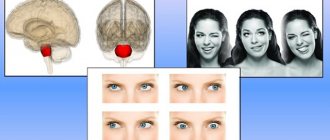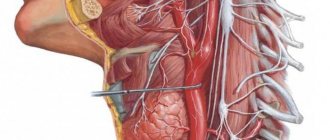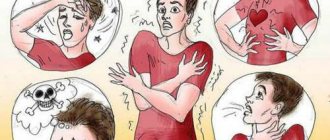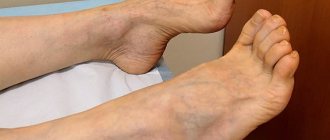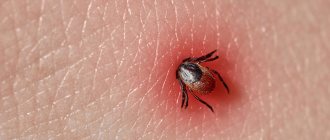Why does the disorder develop?
Somatoform disorder is a disease of a psychological nature in which the symptoms of damage to internal organs are functional, not organic.
Such dysfunction is detected in 0.5% of the world's population, and it affects mainly women. The reason lies, first of all, in the psychological state of a person.
The first group of factors influencing the occurrence of the syndrome is heredity and character traits. For example, people with asthenoneurotic and hysterical types of character are more likely to develop it. They are characterized by hypersensitivity, timid or demonstrative behavior. Such people are characterized by rapid nervous exhaustion; as a rule, they are pessimistic.
The second group is psychogenic traumatic external influences. These include acute stress factors, when a powerful psychological blow at once leads to a disorder of nervous activity. This could be the loss of a loved one, a decrease in social status, or a situation of severe fear.
Chronic stress occurs as a result of systematic mental and physical overstrain, lack of positive emotions, unmet needs and excessive demands on oneself.
It is worth noting that somatoform disorder very often develops in people who are emotionally stingy, hide their feelings, and do not know how to express them. And since emotions need a way out in any case, they find it in this unique way. A similar state can accompany members of religious families, where an atmosphere of strict morality reigns.
Other factors that provoke the disorder include complicated pregnancy, trauma, infections, and some somatic diseases.
Causes of asthenovegetative syndrome
Typically, this disease manifests itself after suffering psycho-emotional trauma, too much mental work, long-term infectious diseases, stress and everything that quickly depletes the body. The modern rhythm of life contributes to the increasingly frequent occurrence of this syndrome in people. Also among the external factors that influence:
- presence of traumatic brain injuries;
- strong psychological stress leading to stress, unfavorable environment at home and at work;
- constant lack of sleep;
- changes in work rhythms, time zones with large differences, climate, lack of vacations.
In addition, the following may serve as a trigger for the development of the disease:
- neurological diseases;
- cardiovascular diseases;
- disturbances in the functioning of the endocrine system.
Signs of illness
Symptoms of somatoform disorder are quite varied and manifest themselves in malfunctions of almost all body systems.
| System | Symptoms |
| Cardiovascular | Arrhythmias, sharp increases and decreases in blood pressure, pain and discomfort in the heart area. |
| Respiratory | Hyperventilation syndrome: shortness of breath, feeling of lack of air, dizziness. |
| Digestive | Irritable bowel syndrome: bloating, abdominal pain, diarrhea. Digestive disorders: poor appetite, nausea, vomiting, difficulty swallowing, feeling of a lump in the throat |
| urinary system | Frequent urination, pain when passing urine. |
| Genital area | Decreased libido, inability to achieve orgasm. Vaginismus in women; in men – weak erection, impaired ejaculation. |
| Other symptoms | Increased sweating of the palms and feet, chills, hyperthermia. |
As a rule, several symptoms associated with different systems occur simultaneously.
There are the following types of this disorder:
- hypochondriacal;
- somatized;
- somatoform dysfunction of the autonomic nervous system (SDVNS);
- chronic somatoform pain disorder;
- undifferentiated somatoform disorder.
Patients with somatoform dysfunction are distinguished by several features. This includes a peculiar, emotional or overly specific narrative about one’s condition. For example, a man comes to a cardiologist with pain and discomfort in his heart. But at the same time, he speaks not only about their character, but also about the fact that they cause him a lot of inconvenience. Such attacks occur at work, at the moment when he is supposed to make a report on his achievements. As a result, he cannot concentrate, paying all attention to his heart.
The reason here is this aspect: perhaps the man is psychologically not ready to talk about his work (for example, due to his failures), and the heart is assigned to the extreme. And it is precisely this that reacts to this stressor in order to divert attention from it.
Other distinguishing features are:
- exaggeration of pathological sensations;
- denial of the role of psychological factors in their development;
- increased irritability towards others.
Hypochondriacal dysfunction
Hypochondriacal disorder is characterized by a person's extreme concern about his or her health. He is sure that he is developing a severe, sometimes fatal disease. But their types may vary from case to case. One time the patient thinks that he has cancer, another time it is a severe heart pathology, etc.
The degree of sensation also changes. Either it seems to the individual that he is on the verge of death, then the manifestations become quite bearable.
It has been established that about 14% of patients visiting doctors of various specialties suffer from hypochondria. Most often it occurs in childhood and adolescence, as well as in mature people.
Basically, the patient is accompanied by the following symptoms:
- from the cardiovascular system - pain in the heart, disruptions in its functioning. The patient's conclusion is heart defects, heart attack;
- from the digestive system - abdominal pain, diarrhea, constipation. Conclusion – stomach and intestinal cancer;
- on the part of the excretory system – fear of uncontrolled urination, and therefore patients even limit leaving the house. Pain in the lower abdomen.
Important criteria for recognizing pathology are the presence of senestopathies and mood disorders.
Senestopathies are manifested by unusual and painful tactile sensations. This may be itching and burning, a feeling of cold, compression and constriction, pulsation of blood in the vessels, twisting, displacement and other similar phenomena.
Mood disorders manifest themselves in increased anxiety, sadness, melancholy, and a feeling of hopelessness. Patients focus only on themselves, and do not hear others at all. At the same time, they believe that no one needs them, everyone has abandoned them.
Such people systematically seek help from doctors. And if a specific disease is not found, they insist on re-examination.
The following nuances will help determine pathology:
- constant belief that a person has a serious illness, often with other concomitant illnesses. And even numerous normal examination results cannot convince them;
- lack of trust in doctors, despite their regular visits;
- the activity of such a patient is not aimed at alleviating the condition, but at confirming the presence of a progressive pathology;
- constant concentration on your illness;
- independent diagnosis.
As hypochondria worsens, it can develop into a paranoid state or hypochondriacal depression.
The diagnosis of hypochondriacal disorder is made when schizophrenia and schizotypal disorders, bipolar affective disorder are excluded.
Hypochondriacs are often found among famous people. Actor and director Woody Allen is one of them. One day, his illness saved him from food poisoning. The entire crew ate pizza, which only he refused due to concerns about his health. As a result, everyone except him developed an eating disorder.
Diagnosis and treatment of astheno-neurotic syndrome
Diagnosis of the disease does not require complex procedures. To identify neurasthenia, a survey of a neurologist is sufficient, but it is important that the patient is completely frank and does not hide any details. For an experienced specialist, it is not difficult to determine astheno-neurotic syndrome only from the existing clinical picture in the first stages of its development, not to mention the third. Therefore, treatment is prescribed immediately.
The main difficulty in diagnosis is discovering the cause or complex of factors that provoked the development of the disease. This point is always given paramount importance, since it is by influencing the cause that the existing problem can be completely solved, while symptomatic therapy will give an effect only for a while. But, unfortunately, it is not always possible to immediately identify all factors.
Treatment of astheno-neurotic syndrome is always complex and involves:
- drug therapy;
- psychotherapy;
- lifestyle corrections;
- therapeutic massage or manual therapy;
- physiotherapeutic procedures.
When a disease is detected in a child, it is usually enough to adjust the lifestyle. Eliminating frankly harmful foods and caffeine-containing drinks from the menu and replacing them with freshly squeezed juices, fruits, vegetables, berries, as well as avoiding prolonged viewing of TV, computer games, etc. usually helps bring the child’s condition back to normal. Long walks in the fresh air are very beneficial, especially before bed. At the same time, it is important to establish a daily routine and strictly adhere to it, so that the baby goes to bed at the same time and can fully rest.
Drug therapy and physical therapy
The nature of drug therapy is selected in accordance with the severity of chronic fatigue syndrome. Therefore, if at the 1st stage of its development it is enough to use herbal teas or traditional medicine in combination with taking complex vitamin preparations, then with more serious changes the prescription of a number of sedatives and antidepressants is required.
Thus, drug treatment for chronic fatigue syndrome may include:
- sedatives (sedatives) of plant origin, including tinctures of valerian, motherwort and complex preparations such as Persen - reduce the excitability of the nervous system and help reduce anxiety;
- antidepressants - prescribed when there is no effect from taking sedatives, they quickly relieve anxiety, calm, but can provoke the development of side effects;
- antiasthenic drugs – increase vitality and restore energy;
- nootropics – improve brain function, increase the ability to concentrate, improve memory and the course of thought processes;
- adaptogens, including Eleutherococcus tincture – help increase the body’s ability to adapt to changing living conditions;
- vitamins – have a general strengthening effect on the body.
The effect of the drugs is supplemented by the appointment of physiotherapeutic procedures. Most often, for astheno-neurotic syndrome, it is recommended to undergo a course of reflexology and electrosleep sessions.
Many people enjoy aromatherapy. In the absence of allergies, no one can prohibit the patient from using this treatment method to normalize the psychological state and overcome existing problems. But aromatherapy can only act as an auxiliary method of treatment, and does not replace the therapy regimen prescribed by the doctor.
Psychotherapy
Since personality traits and psychological factors play a large role in the development of astheno-neurotic syndrome, treatment of the disease, especially in the later stages of development, is impossible to imagine without the help of a psychotherapist or psychologist. This specialist will help to identify deep-seated personality problems, traumatic situations and work through them in order to eliminate the pressure they create.
It is almost always recommended that patients find an outlet for themselves - some kind of hobby that will bring pleasure and help them relax. This could be any activity from knitting, drawing, spending time with a pet, collecting coins, or reading.
Particularly effective elements of psychotherapy for patients with astheno-neurotic syndrome are art therapy and sand therapy. Drawing in general helps to cope with tension and throw out any accumulated emotions and experiences, and often it helps to get to the bottom of the problem and find an easy way to solve it.
Breathing exercises are of great benefit for people with chronic fatigue syndrome, as it has a relaxing effect on the body and puts you in a good mood.
Lifestyle correction
Since a person’s lifestyle plays an important role in the development of astheno-neurotic syndrome, much attention is paid to its correction. It is often recommended:
- to refuse from bad habits;
- increase the level of physical activity, cardio exercise and yoga are especially useful;
- avoid overexertion;
- alternate work with rest;
- take vitamins;
- pay attention to nutrition.
The diet for astheno-neurotic syndrome consists of avoiding the use of synthetic energy drinks, as well as minimizing the consumption of coffee, tea, and other caffeine-containing drinks. They are replaced with herbal infusions, hawthorn or rose hip infusion, tea with chamomile, mint, lemon balm, etc. Be sure to enrich the daily diet with fresh fruits and vegetables. At the same time, it is advisable to minimize the amount of fried and fatty foods and baked goods consumed.
Therapeutic massage and manual therapy
Both procedures involve manual pressure on the soft tissues of the back, which provides a pronounced relaxing and healing effect. But manual therapy differs from therapeutic massage in that during the session the specialist also works on the spine. As you know, the quality of functioning of the whole organism and especially the nervous system depends on its condition. Therefore, manual therapy sessions make it possible to influence the main link in the development of chronic fatigue syndrome – autonomic disorders.
Consequently, both therapeutic massage and manual therapy have a positive effect on the patient’s recovery rate. But if for mild forms of the disorder only therapeutic massage is sufficient, then for more serious disorders or the desire to achieve maximum effect, preference should be given to manual therapy.
Thus, almost everyone can encounter a disease such as astheno-neurotic syndrome. In the initial stages of development, it cannot be considered a life-threatening condition, but if the problem is ignored, it can still become a serious disorder. But timely, comprehensive treatment will allow you to completely cope with it and return to a normal, fulfilling life.
0 0 votes
Article rating
Somatization and chronic somatoform pain disorder
Somatized dysfunction, in addition to organ manifestations, causes a decrease in the functioning of analyzers: vision, hearing, touch, smell. Coordination of movements is impaired: patients become clumsy and have an unsteady gait. Movement disorders manifest themselves in the form of paresis and paralysis.
They describe failures in the functioning of internal organs colorfully and with charm. For example, my head hurts, as if a hoop was put on it and was gradually being squeezed. Or your stomach is swollen like a balloon.
Unlike a hypochondriac, who expresses anxiety about his health, such a patient responds more rudely and persistently. He is convinced that he is sick. And if the doctor tries to hint at the psychogenic nature of the disorder, he screams and is indignant, rejecting what was said, and demands additional examination. This patient is constantly dissatisfied and complains.
The course of the disease is chronic, with wide variability of symptoms that persist for 2 years or more.
Often, a person, due to his anxiety and aggressiveness, experiences social maladjustment and family conflicts.
A pain disorder is distinguished by the presence of severe, debilitating pain that occurs for no reason. Usually it has a clear localization - the stomach, the heart. The pain characteristics do not change, there are no other symptoms.
During somatoform dysfunction, an undifferentiated disorder is also distinguished. With it, a person suffers all the typical symptoms of the disease, but it is not possible to classify them into any known group.
Somatoform dysfunction of the autonomic nervous system
The syndrome develops when there is a malfunction of the autonomic nervous system, which controls the functioning of internal organs, blood vessels, and is responsible for the course of physiological processes and the mobilization of the body as a whole.
The ANS consists of 2 sections: parasympathetic and sympathetic.
The sympathetic nervous system increases the heart rate, constricts blood vessels and increases blood pressure. Increases sweating and slows down intestinal motility. It relaxes the bladder, dilates the bronchi and pupil. Sympathy speeds up metabolism and activates the body as a whole.
The parasympathetic system has the opposite effect. But, despite the opposition of departments, normal well-being of a person is ensured by their coordinated work. Any malfunctions in the functioning of both systems cause various pathological sensations and syndromes, in particular, somatoform dysfunction.
There are 3 types of disorders:
- with a predominance of sympathy;
- with a predominance of parasympathetics;
- mixed.
According to the flow, stable and paroxysmal, with vascular and other types of crisis are distinguished.
Pathology can be primary, that is, it develops on its own, or secondary, after previous illnesses. Its symptoms manifest themselves under the influence of a psychotraumatic factor.
Such patients are characterized, first of all, by the appearance of vegetative signs: severe sweating, tremors of the limbs, paleness and redness of the skin.
Another group of signs expresses the dysfunction of internal organs under the control of the ANS:
- cough, shortness of breath, laryngeal spasm;
- tachycardia, arrhythmia, blood pressure changes. Heart pain does not have a clear localization and can be of various types. It happens that they are accompanied by a feeling of anxiety or fear. They are worse at rest, but go away during physical activity. Lasts from a few minutes to several days. Heart symptoms are so believable that they sometimes confuse even specialists;
- abdominal pain, bloating, difficulty swallowing; “bear disease” - diarrhea under the influence of stress;
- difficulty urinating, urinary incontinence;
- headaches, fatigue, poor sleep.
The complaints are numerous, but lack specifics. They signal a disruption in the functioning of several organs at once.
Patients are concerned about their condition, but still not to the same extent as hypochondriacs. They strive to find a way out of the situation and receive adequate treatment.
Diagnostics
Various methods are used to make an accurate diagnosis. To exclude pathologies of other organs, laboratory tests (general blood and urine analysis, blood biochemistry), an electrocardiogram and an electroencephalogram of the brain are prescribed. To identify deviations, a psychologist conducts a pathopsychological examination. To exclude serious mental disorders (schizophrenia, bipolar disorder), a neurophysiological test system is used. Sometimes MRI is used as an additional diagnosis.
SDVNS in children
Often, somatoform autonomic disorder appears in children at puberty, that is, during the period of maturation. This is due to a hormonal surge and intensive growth of the body.
The following factors can provoke the process:
- heredity;
- stress;
- mental, physical stress;
- infections;
- bad habits;
- surgical interventions;
- large body weight;
- sedentary lifestyle;
- staying at the computer for a long time.
The appearance of teenagers is typical. If sympathy predominates, then the skin of such children is moist and oily, with acne. She alternately turns red and pale. A bluish tint appears. Cold, with a marbled pattern called a vascular necklace. When pressed with a finger, the skin turns pale and red dermographism is observed.
When parasympathetics dominate, the skin is dry, with pink or white dermographism. These children have an increased appetite, but they do not gain weight.
The disorder is accompanied by a sudden rise in temperature under the influence of stress. A typical occurrence is fainting.
All characteristic changes in internal organs are present.
The psycho-emotional sphere is also undergoing changes. Such a child becomes distracted and nervous. He quickly gets tired, drowsiness and apathy appear, and his memory deteriorates.
In most cases, the course of the disease is stable. But periodically panic attacks and crises occur:
- sympatho-adrenal - accompanied by tachycardia, elevated blood pressure, headaches, thirst, chills and hyperthermia. Anxiety and feelings of fear develop;
- vagoinsular – migraine-like attacks, nausea, vomiting, pain in the abdominal area. Hyperhidrosis, decreased blood pressure and fainting, slow heart rate, increased urine output, breathing disorders;
- mixed.
The attack can last up to several hours.
